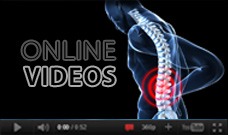Cervical Degenerative Disc Disease
Cervical degenerative disc disease (DDD) is a misnomer as it is not a disease as such but a condition that affects the strength, resiliency and structural integrity of the intervertebral discs due to increasing age, trauma, injury, repetitive movement, improper posture, or poor body mechanics. Cervical DDD is commonly seen in adults after 50 years of age and most of them are usually not aware about their condition until they are examined for some other health condition.
The intervertebral disc is composed of an inflexible ring called the annulus fibrosis which encloses a gelatinous inner structure called the nucleus pulposus. The discs are kept in position with the help of endplates between two vertebral bodies. The intervertebral discs act as shock absorbers.
As we age, the rate at which the old, worn out cells are replaced is gradually reduced, resulting in the degenerative changes in the discs which can also be accelerated by injury or trauma.
These structural changes can cause a sequence of other changes, resulting in nerve compression and pain due to reduction in the disc height, and presence of bone spurs or bony overgrowths (osteophytes). Other conditions such as cervical spinal stenosis and osteoarthritis (spondylosis) can also affect the intervertebral joints and cervical stability.
Symptoms
Most people with cervical DDD are asymptomatic; however, cervical DDD may be associated with a gradual development of symptoms that may further deteriorate with time. Patients may experience pain and other symptoms in their shoulder and arms, this is known as radiculopathy. Some of the common symptoms of cervical DDD include:
- Mild to intense pain
- Increased pain with movement
- Burning, tingling or numbness
- Stiffness in hand or arm
- Improper balance and gait
- In rare cases, bowel and bladder dysfunction can develop
Diagnosis
Seek a specialist’s advice for your neck pain and pre-existing or changing spinal disorder, as accurate diagnosis is crucial for effective and successful treatment.
An accurate diagnosis of cervical DDD comprises of:
- Medical and family history of the patient
- Physical and neurological examinations
- Testing of reflexes to evaluate muscle weakness, sensitivity, and other signs of neurological injury
- The diagnostic imaging techniques such as X-rays, CT scan, MRI scans, discography or fluoroscopy may be employed to confirm the diagnosis
Simple X-rays help in identification of the collapsed disc space. X-ray images of the spine, at different positions, also helps evaluate stability of the spine. CT and MRI scans are more precise in evaluating the disc and endplate changes. In discography a special dye is injected into one or more discs to identify the damage such as a crack or tear. Real time x-ray (fluoroscopy) helps to locate the origin of pain.
Treatment
Both surgical and non-surgical methods can be used in the treatment of cervical DDD. The initial approach comprises of non-surgical options and sometimes a combination of two or more therapies may be used to relieve pain and other symptoms. The non-surgical options include:
- Medications such as analgesics, muscle relaxants and narcotics
- Spinal injections
- Supporting the spine with braces to relieve pain
- Physiotherapy
- Acupuncture
Surgical treatment is recommended for patients who fail to respond to non-surgical treatment, or in those patients with spinal instability and neurological dysfunction. Minimally invasive spine surgery can be performed in these patients. Spinal stabilization and fusion can be considered in a few cases to prevent further deterioration of the patient’s condition.
Consult your doctor for resolution of any of your queries or for any additional information.
|











